Home>Garden Essentials>What Is The Difference Between A Nut And A Seed
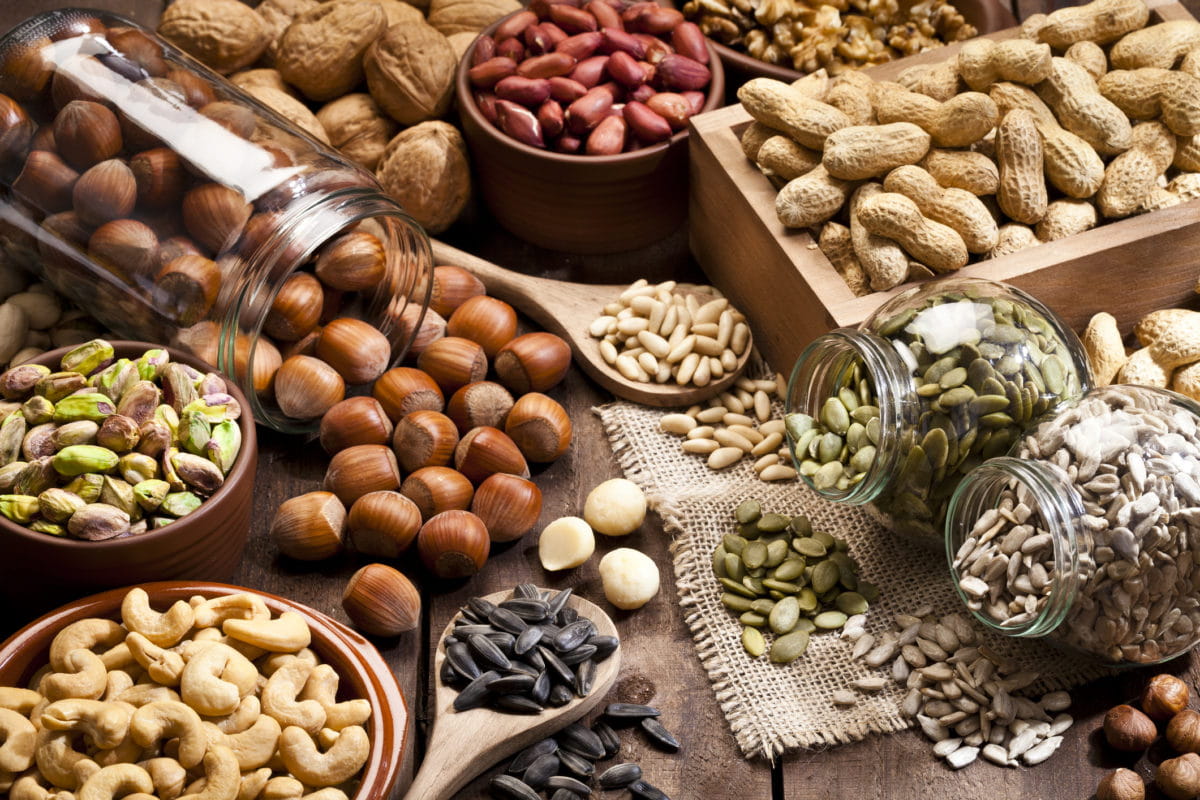

Garden Essentials
What Is The Difference Between A Nut And A Seed
Modified: March 16, 2024
Discover the distinction between a nut and a seed in your garden. Learn about the characteristics and uses of these botanical wonders.
(Many of the links in this article redirect to a specific reviewed product. Your purchase of these products through affiliate links helps to generate commission for Storables.com, at no extra cost. Learn more)
Introduction
Welcome to the fascinating world of botany and gastronomy! Have you ever wondered about the difference between a nut and a seed? While they may seem similar at first glance, there are some important distinctions that set them apart. In this article, we will explore the definitions, classification criteria, culinary uses, nutritional value, and health benefits of nuts and seeds.
Nuts and seeds play a significant role in our diets and have been enjoyed by humans for thousands of years. They are not only delicious but also pack a nutritional punch. While nuts and seeds often find themselves in similar contexts, such as salads, snacks, and baked goods, their botanical properties make them unique.
So, what exactly is a nut? And what qualifies as a seed? Let’s dive into the definitions first.
Key Takeaways:
- Nuts, like almonds and walnuts, are hard-shelled fruits with high fat content. They offer heart-healthy fats, protein, and antioxidants, making them versatile and beneficial for overall health.
- Seeds, such as chia and pumpkin seeds, are nutrient powerhouses with fiber, healthy fats, and antioxidants. They support heart health, digestion, and weight management, making them a valuable addition to a balanced diet.
Definition of Nuts
Nuts are a type of hard-shelled fruit that does not split open to release its seed. In botany, they are classified as a specific type of dry fruit known as a “indehiscent fruit.” This means that the fruit does not open on its own to disperse the seed. Instead, the seed remains encased within the hard shell of the nut. The tough outer shell of a nut provides protection to the seed inside.
Nuts come in various shapes and sizes, but they all share certain characteristics. They have a hard, woody shell that is not easily broken by hand. Unlike other fruits, the fleshy part of a nut is minimal or non-existent. Generally, nuts are characterized by their high fat content, which gives them a rich and creamy texture.
Some common examples of nuts include almonds, walnuts, cashews, pistachios, and hazelnuts. These nuts are not only delicious but also versatile in cooking and baking, making them a popular choice for both savory and sweet dishes.
Definition of Seeds
Seeds, on the other hand, are a vital part of plant reproduction and propagation. They are formed within the reproductive organ of a plant, such as a flower or fruit. Seeds are defined as the mature ovule of a plant that contains an embryo, along with a protective coating called the seed coat.
Seeds serve as a means for plants to disperse and propagate themselves. They are often dispersed by wind, water, or animals, allowing them to reach new areas and grow into new plants. The seed coat acts as a protective layer, shielding the delicate embryo inside from external elements and providing nutrients for its early growth.
Unlike nuts, seeds come in a wide variety of shapes, sizes, and textures. Some seeds are tiny, like those of poppy or sesame, while others are relatively larger, like those of pumpkin or sunflower. Seeds can be found inside fruits, such as apples or strawberries, or they can be found individually, like in the case of sunflower seeds.
Seeds are rich sources of essential nutrients and can be consumed raw or processed. Many seeds are used in cooking, baking, and even oil production. They provide a crunchy texture, nutty flavor, and a range of nutritional benefits.
Now that we have a clear understanding of what nuts and seeds are, let’s explore the criteria used for their classification.
Classification Criteria
The classification of nuts and seeds is based on various criteria, including their botanical characteristics, culinary uses, and traditional definitions. Here are some key factors used to differentiate between nuts and seeds:
- Botanical Classification: Nuts are classified as dry indehiscent fruits with a hard shell that does not split open to release the seed. Seeds, on the other hand, are the mature ovules of plants, enclosed in a protective seed coat.
- Culinary Uses: Nuts and seeds have distinct culinary applications. Nuts are often consumed as standalone snacks, used as ingredients in savory dishes or incorporated into baked goods. Seeds, on the other hand, are commonly used in cooking, baking, and as toppings for salads, yogurt, and granola.
- Traditional Definitions: Traditional definitions and cultural practices also play a role in classifying nuts and seeds. For example, certain fruits with hard shells and edible seeds are referred to as nuts in common language, even though they may not align with the botanical definitions. Examples include peanuts and pine nuts.
It’s important to note that the classification of nuts and seeds can sometimes be subjective and may vary depending on regional or cultural contexts. For example, peanuts are considered legumes botanically, but they are often referred to as nuts due to their similar culinary uses and characteristics.
Now that we understand the classification criteria, let’s delve into the key differences between nuts and seeds.
Key Differences Between Nuts and Seeds
While nuts and seeds share some similarities, there are several key differences that set them apart. These differences are primarily based on their botanical characteristics, culinary uses, and nutritional profiles. Here are the key distinctions between nuts and seeds:
- Botanical Classification: Nuts are classified as dry indehiscent fruits with a hard shell that does not split open to release the seed. Seeds, on the other hand, are the mature ovules of plants, enclosed in a protective seed coat.
- Shell Structure: Nuts typically have a hard and woody shell that is difficult to crack open by hand. On the other hand, seeds can have a variety of shell structures, ranging from soft and thin (like in strawberries) to hard and thick (like in almonds).
- Size and Shape: Nuts are generally larger in size and have a more consistent shape, such as the oval-shaped almond or the round-shaped hazelnut. Seeds, on the other hand, come in a wide range of sizes and shapes, from tiny and spherical like poppy seeds to large and flat like pumpkin seeds.
- Culinary Uses: Nuts are often consumed as standalone snacks, used in baking or cooking, or incorporated into various culinary preparations. They have a rich and creamy texture, making them a popular choice in both savory and sweet dishes. Seeds, on the other hand, are commonly used as toppings, adding a crunchy texture and nutty flavor to salads, cereals, granola, and baked goods.
- Nutritional Profile: Nuts and seeds differ in their nutritional compositions. Nuts are generally higher in fat, particularly healthy monounsaturated and polyunsaturated fats, as well as protein. They also contain various essential vitamins and minerals. Seeds, on the other hand, tend to be lower in fat and higher in carbohydrates and fiber. They also provide a good source of plant-based proteins, essential fatty acids, and minerals.
It’s important to note that these differences are not rigid and can vary depending on the specific type of nut or seed. Additionally, there may be some overlap or exceptions to these distinctions, due to cultural practices and regional variations in terminology.
Now that we have explored the key differences between nuts and seeds, let’s move on to discuss some examples of nuts and seeds.
Examples of Nuts
Nuts come in a wide variety of types, each with its own unique flavor profile, texture, and culinary uses. Here are some examples of popular nuts:
- Almonds: Almonds are a versatile nut with a delicate and slightly sweet flavor. They are commonly used in both sweet and savory dishes, as well as in baking and confectionery.
- Walnuts: Walnuts have a rich and buttery flavor with a slightly bitter undertone. They are often enjoyed raw or roasted and are a popular ingredient in baking and cooking.
- Cashews: Cashews are known for their creamy texture and mild, buttery flavor. They are used in both savory and sweet dishes, as well as in vegan cheeses and plant-based creams.
- Pistachios: Pistachios have a unique green color and a sweet, nutty flavor. They are often consumed as a snack, used in desserts, or as a topping for salads or savory dishes.
- Hazelnuts: Hazelnuts have a rich, nutty flavor and are commonly used in confectionery, as well as in baking and cooking. They are a key ingredient in popular spreads like Nutella.
- Pecans: Pecans have a sweet and buttery flavor, making them a popular choice for pies, tarts, and other desserts. They are also enjoyed roasted as a snack.
- Brazil nuts: Brazil nuts have a rich and creamy texture, along with a slightly sweet flavor. They are often consumed on their own or used in baking and confectionery.
These are just a few examples of the many delicious nuts available. Each nut brings its own unique taste and texture, allowing for endless culinary possibilities.
Now, let’s explore some examples of seeds.
Examples of Seeds
Seeds are incredibly diverse and can be found in numerous plants, ranging from fruits to flowers. Here are some examples of commonly consumed seeds:
- Sesame Seeds: Sesame seeds are small, oval-shaped seeds with a nutty flavor. They are widely used in cooking, especially in Asian cuisine, and are often sprinkled on top of bread, buns, and salads.
- Chia Seeds: Chia seeds are small, black seeds known for their high nutritional value. They have a mild, nutty flavor and are popularly used in puddings, smoothies, and as an egg substitute in vegan baking.
- Pumpkin Seeds: Pumpkin seeds, also known as pepitas, are flat, greenish seeds that can be eaten raw or roasted. They have a slightly sweet and nutty flavor and are often enjoyed as a snack or used as a topping for salads, soups, and granola.
- Sunflower Seeds: Sunflower seeds are large, flat seeds with a mild, nutty taste. They can be consumed raw or roasted and are commonly enjoyed as a snack, added to trail mixes, or used in baking recipes.
- Flaxseeds: Flaxseeds are small, brown or golden seeds that are known for their high content of omega-3 fatty acids and fiber. They have a slightly nutty flavor and are often ground and used in baking, smoothies, or sprinkled over cereals and yogurt.
- Pomegranate Seeds: Pomegranate seeds are juicy, vibrant red seeds found inside the pomegranate fruit. They have a sweet and slightly tart taste and are commonly used as a garnish for salads, desserts, and beverages.
- Quinoa Seeds: Quinoa seeds are small, round grains that are considered pseudo-seeds. They are a nutritious grain-like food rich in protein and fiber. Quinoa seeds are prepared by boiling and are enjoyed in salads, stir-fries, or as a side dish.
These examples barely scratch the surface of the vast array of seeds found in nature. Each seed brings its own unique texture, flavor, and nutritional composition, providing a wide range of culinary possibilities.
Now that we’ve explored examples of both nuts and seeds, let’s move on to discuss their culinary uses.
Tip: The main difference between a nut and a seed is that a nut is a hard-shelled fruit that doesn’t split open when it’s ripe, while a seed is the reproductive part of a plant that can be enclosed in a fruit or not.
Culinary Uses of Nuts
Nuts are incredibly versatile ingredients that add flavor, texture, and nutritional value to a wide range of dishes. Here are some common culinary uses of nuts:
- Snacks: Nuts are often enjoyed as a standalone snack. Whether it’s a handful of almonds, cashews, or pistachios, they provide a satisfying crunch and a boost of energy.
- Baking: Nuts are a popular addition to cakes, cookies, muffins, and bread. They can be used in whole, chopped, or ground form to add flavor, crunch, and richness to various baked goods.
- Desserts: Nuts are commonly used in desserts such as pies, tarts, and ice creams. They can be incorporated into fillings, crusts, or sprinkled on top for added texture and flavor.
- Savory Dishes: Nuts bring a delightful crunch and nutty flavor to savory dishes. They can be used as a topping for salads, stir-fries, or roasted vegetables. Nuts can also be ground and used as a coating for meat or fish.
- Nut Butters and Spreads: Nuts like peanuts, almonds, and cashews are often processed into creamy nut butters and spreads. They can be enjoyed on toast, used as a dip, or incorporated into sauces and dressings.
- Plant-Based Milks: Nuts like almonds and cashews can be blended with water to create delicious and nutritious plant-based milks. These milks can be enjoyed on their own or used as a dairy-free alternative in various recipes.
- Trail Mixes and Granolas: Nuts are a staple ingredient in trail mixes and granola bars. They provide a satisfying crunch along with essential nutrients, making them an ideal snack for outdoor activities or on-the-go.
The culinary uses of nuts are limited only by one’s imagination. From sweet to savory dishes, nuts bring a delightful depth of flavor and texture that enhances a wide variety of recipes.
Now, let’s explore the culinary uses of seeds.
Culinary Uses of Seeds
Seeds are incredibly versatile ingredients that add texture, flavor, and nutritional value to a wide range of dishes. Here are some common culinary uses of seeds:
- Toppings: Seeds are often used as toppings for salads, yogurt, and smoothie bowls. They add a crunchy texture and nutty flavor, enhancing the overall taste experience.
- Baking: Seeds such as sesame, poppy, and chia seeds can be incorporated into bread, muffins, cookies, and crackers. They not only add visual appeal but also contribute to the taste and texture of the finished products.
- Granola and Muesli: Seeds like pumpkin, sunflower, and flaxseeds are key ingredients in homemade granola and muesli. They provide a satisfying crunch and nutritional boost to breakfast cereals.
- Smoothies and Drinks: Seeds like chia and flaxseeds can be soaked in liquid, causing them to swell and form a gel-like consistency. This makes them a popular addition to smoothies and health drinks, providing added texture and nutrition.
- Plant-Based Protein: Seeds such as chia, hemp, and pumpkin seeds are rich sources of plant-based proteins. They can be ground into powders or sprinkled on top of dishes to increase protein content and add a nutty flavor.
- Condiments and Spreads: Seeds like sesame seeds are used to make tahini, a popular paste used in Middle Eastern cuisine. Additionally, ground flaxseeds can be used as an egg substitute in baking, adding moisture and binding properties.
- Cooking and Roasting: Seeds can be added to stir-fries, roasted vegetables, or grain dishes for added texture and flavor. They can be toasted to enhance their nutty taste and used as a garnish.
The culinary uses of seeds are diverse and offer a wide range of options for incorporating them into various dishes. Whether as toppings, ingredients, or substitutes, seeds add an element of nutrition and flavor that enriches the culinary experience.
Now that we’ve explored the culinary uses of both nuts and seeds, let’s move on to discuss their nutritional value.
Nutritional Value of Nuts
Nuts are not only delicious but also packed with essential nutrients that contribute to a healthy diet. Here are some of the key nutritional components found in nuts:
- Healthy Fats: Nuts are a rich source of healthy fats, including monounsaturated and polyunsaturated fats. These fats help support heart health and reduce the risk of cardiovascular diseases when consumed in moderation.
- Protein: Nuts are a good source of plant-based proteins. They provide an adequate amount of amino acids that are essential for the body’s growth, repair, and maintenance.
- Fiber: Nuts are also a great source of dietary fiber, which aids in digestion, helps maintain a healthy weight, and promotes satiety. Fiber is beneficial for regulating blood sugar levels and reducing the risk of certain chronic diseases.
- Vitamins and Minerals: Nuts are rich in various vitamins and minerals, such as vitamin E, magnesium, potassium, and calcium. Vitamin E is an antioxidant that helps protect cells from damage, while minerals support bone health, muscle function, and overall well-being.
- Antioxidants: Many nuts contain antioxidants, such as flavonoids and phenolic compounds. These antioxidants help reduce inflammation and protect against oxidative stress, which can contribute to chronic diseases.
- Plant Compounds: Nuts are also a source of phytochemicals, including phytosterols and polyphenols. These plant compounds have been associated with various health benefits, including reduced cholesterol levels and improved heart health.
It’s important to note that while nuts are nutrient-dense, they are also high in calories. Therefore, portion control is key to enjoying the benefits without overindulgence.
Now that we’ve explored the nutritional value of nuts, let’s move on to discuss the nutritional value of seeds.
Nutritional Value of Seeds
Seeds are powerhouses of nutrition, offering a wide range of essential nutrients that contribute to overall health and well-being. Here are some key nutritional components found in seeds:
- Healthy Fats: Seeds, such as chia, flaxseeds, and pumpkin seeds, are rich in healthy fats, including omega-3 fatty acids. These fats are beneficial for heart health, brain function, and reducing inflammation in the body.
- Protein: Seeds are excellent sources of plant-based proteins. They contain a good balance of essential amino acids necessary for muscle repair and growth. Incorporating seeds into a plant-based diet can help meet protein requirements.
- Fiber: Seeds are high in dietary fiber, which aids in digestion, promotes feelings of fullness, and helps maintain a healthy weight. Fiber also plays a role in regulating blood sugar levels and supporting a healthy digestive system.
- Vitamins and Minerals: Seeds are rich in various vitamins and minerals, including vitamin E, vitamin B complex, magnesium, phosphorus, and zinc. These nutrients play crucial roles in energy production, immune function, and maintaining healthy bones and teeth.
- Antioxidants: Many seeds, especially dark-colored ones like chia and flaxseeds, are packed with antioxidants. Antioxidants help protect cells from damage caused by free radicals and reduce the risk of chronic diseases, including certain cancers and cardiovascular conditions.
- Plant Compounds: Seeds are abundant in plant compounds such as lignans, phytosterols, and phenolic compounds. These bioactive substances have been linked to various health benefits, including reduced cholesterol levels, improved hormonal balance, and anti-inflammatory properties.
Seeds can be a valuable addition to any diet, providing a convenient and nutrient-dense source of essential nutrients. They are particularly favored by those following plant-based or vegetarian diets as they offer a wide range of vitamins, minerals, healthy fats, and plant-based proteins.
Now that we’ve explored the nutritional value of both nuts and seeds, let’s move on to discuss the health benefits associated with their consumption.
Health Benefits of Nuts
Nuts offer a multitude of health benefits when incorporated into a balanced diet. Here are some key health benefits associated with the consumption of nuts:
- Heart Health: Nuts are rich in unsaturated fats, including monounsaturated and polyunsaturated fats, which can help reduce the risk of heart disease. These healthy fats help lower LDL (bad) cholesterol levels and improve overall cholesterol profiles.
- Reduced Inflammation: Nuts contain anti-inflammatory compounds, such as polyphenols and Omega-3 fatty acids, which have been shown to reduce chronic inflammation in the body. Chronic inflammation is associated with various diseases, including heart disease, diabetes, and certain cancers.
- Weight Management: Despite being calorie-dense, nuts can actually support weight management. The combination of healthy fats, protein, and fiber in nuts helps promote feelings of satiety, reducing overall calorie intake and aiding in weight maintenance.
- Improved Brain Function: The healthy fats and nutrients found in nuts, such as vitamin E and B-complex vitamins, are linked to improved brain health and cognitive function. Regular nut consumption has been associated with a lower risk of age-related cognitive decline and neurodegenerative disorders.
- Diabetes Control: Nuts have a low glycemic index and are rich in fiber, which helps regulate blood sugar levels. Incorporating nuts into a balanced diet can help improve insulin sensitivity and reduce the risk of type 2 diabetes.
- Reduced Risk of Chronic Diseases: The antioxidants and phytochemicals found in nuts have been shown to have protective effects against chronic diseases. Regular consumption of nuts has been associated with a decreased risk of cardiovascular diseases, certain cancers, and overall mortality.
- Improved Nutrient Absorption: Nuts are not only nutritious themselves but can also enhance the absorption of nutrients from other foods. The healthy fats in nuts help improve the absorption of fat-soluble vitamins, such as vitamins A, D, E, and K.
It’s important to note that the health benefits of nuts are maximized when they are consumed as a part of a balanced diet alongside other wholesome foods. Keep in mind that portion control is key as nuts are calorie-dense.
Now that we’ve explored the health benefits of nuts, let’s move on to discuss the health benefits associated with the consumption of seeds.
Health Benefits of Seeds
Seeds are not just tiny powerhouses of nutrients but also offer a wide array of health benefits when incorporated into a well-rounded diet. Here are some key health benefits associated with the consumption of seeds:
- Heart Health: Seeds, such as flaxseeds and chia seeds, are rich in omega-3 fatty acids, which have been shown to reduce the risk of heart disease. These healthy fats help lower blood pressure, decrease inflammation, and improve overall cardiovascular health.
- Digestive Health: Seeds are packed with dietary fiber, promoting healthy digestion and preventing constipation. Adequate fiber intake from seeds can assist in maintaining a healthy gut microbiome, supporting optimal bowel movements, and reducing the risk of digestive disorders.
- Weight Management: The high fiber and protein content of seeds contribute to feelings of fullness and can aid in weight management. Additionally, the healthy fats in seeds help regulate appetite and promote satiety, reducing the likelihood of overeating.
- Blood Sugar Control: Seeds, such as chia seeds, have a high fiber content and a low glycemic index, making them beneficial for blood sugar control. Their slow digestion and absorption help stabilize blood glucose levels, reducing the risk of insulin resistance and type 2 diabetes.
- Reduced Inflammation: Certain seeds, including flaxseeds and pumpkin seeds, contain antioxidants and anti-inflammatory compounds that can help reduce systemic inflammation. Chronic inflammation has been linked to various diseases, including arthritis, heart disease, and certain cancers.
- Bone Health: Seeds, such as sesame seeds, are rich in calcium, magnesium, and phosphorus, which are essential minerals for maintaining strong and healthy bones. Including seeds in your diet can help support bone density, reducing the risk of osteoporosis and fractures.
- Antioxidant Protection: Seeds are a good source of antioxidants, including phenolic compounds and vitamin E, which help protect cells from free radical damage. Antioxidants contribute to overall health and may help reduce the risk of chronic diseases, such as cancer and cardiovascular diseases.
It’s important to incorporate a variety of seeds into your diet to benefit from the diverse range of nutrients they offer. Remember to consume seeds as part of a balanced diet and practice portion control as they are calorie-dense.
Now that we’ve explored the health benefits of both nuts and seeds, let’s conclude our discussion.
Conclusion
Nuts and seeds are not only delicious additions to meals and snacks but also bring a wealth of nutritional value and health benefits to the table. Understanding the distinctions between nuts and seeds, as well as their similarities, is important for both culinary and botanical purposes.
Nuts, such as almonds, walnuts, and cashews, are classified as dry indehiscent fruits with a hard shell. They boast a high content of healthy fats, protein, fiber, vitamins, minerals, and antioxidants. Nuts are known for their culinary versatility, being incorporated into various dishes, baked goods, and snacks. Their consumption has been linked to improved heart health, reduced inflammation, weight management, and enhanced brain function.
Seeds, including chia seeds, pumpkin seeds, and flaxseeds, stem from the reproductive organs of plants and feature a protective seed coat. They are also packed with an array of nutrients, including healthy fats, protein, fiber, vitamins, minerals, and antioxidants. Seeds find their way into an assortment of culinary creations, such as toppings, baked goods, smoothies, and condiments. Regular consumption of seeds can contribute to heart health, digestive health, weight management, and blood sugar control.
Both nuts and seeds offer unique textures, flavors, and nutrition profiles, making them valuable additions to any diet. They provide essential nutrients, promote satiety, support overall well-being, and help reduce the risk of chronic diseases.
When incorporating nuts and seeds into your diet, it is essential to practice portion control due to their high calorie content, but don’t be afraid to savor their delightful flavors and reap their many benefits. Use them creatively in your recipes, experiment with different combinations, and enjoy the wholesome goodness they provide.
So whether you’re snacking on a handful of almonds, sprinkling chia seeds in your morning smoothie, or adding walnuts to your favorite salad, embrace the power of nuts and seeds as valuable ingredients in your culinary journey towards a healthy lifestyle.
Frequently Asked Questions about What Is The Difference Between A Nut And A Seed
Was this page helpful?
At Storables.com, we guarantee accurate and reliable information. Our content, validated by Expert Board Contributors, is crafted following stringent Editorial Policies. We're committed to providing you with well-researched, expert-backed insights for all your informational needs.
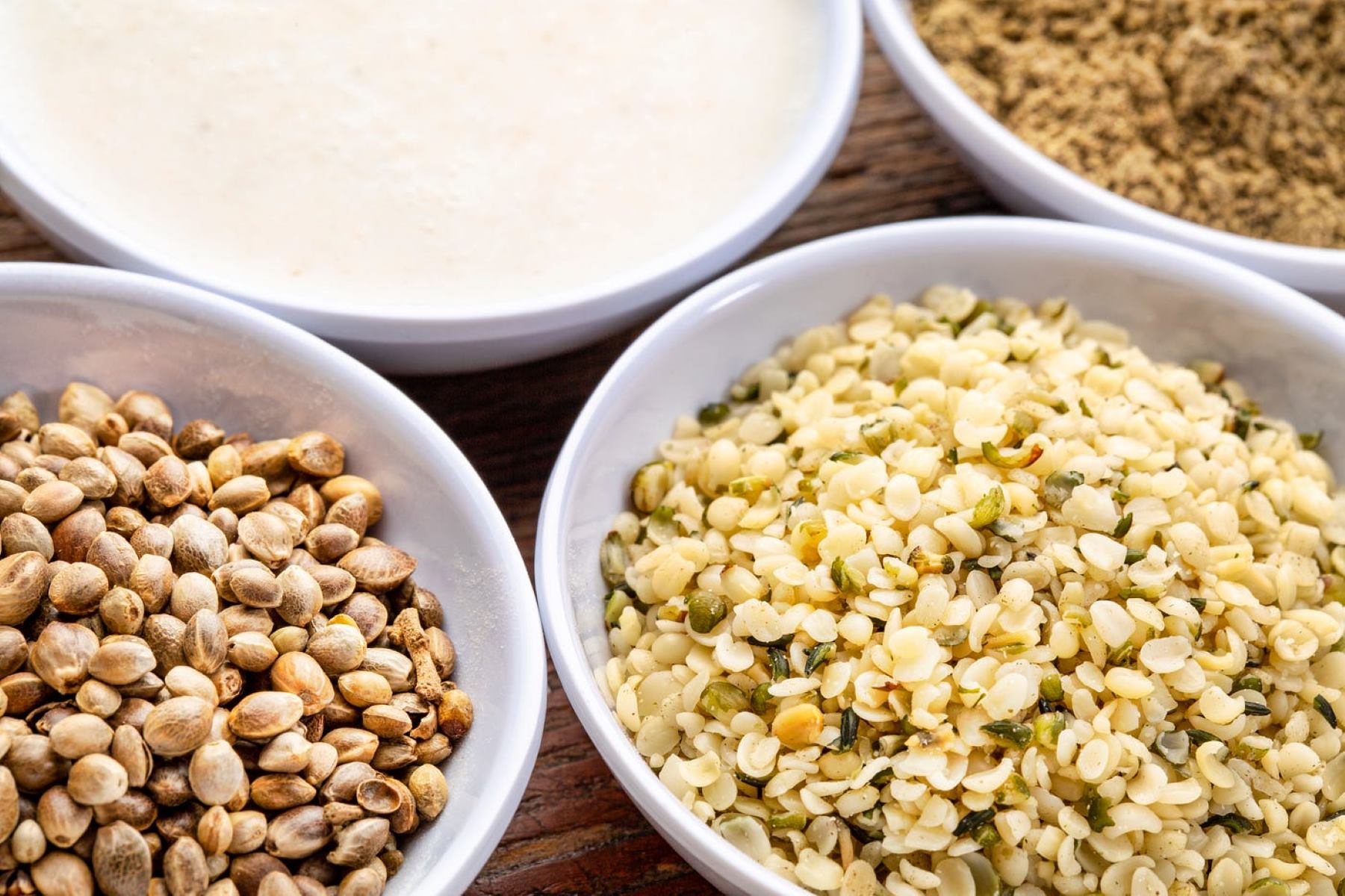
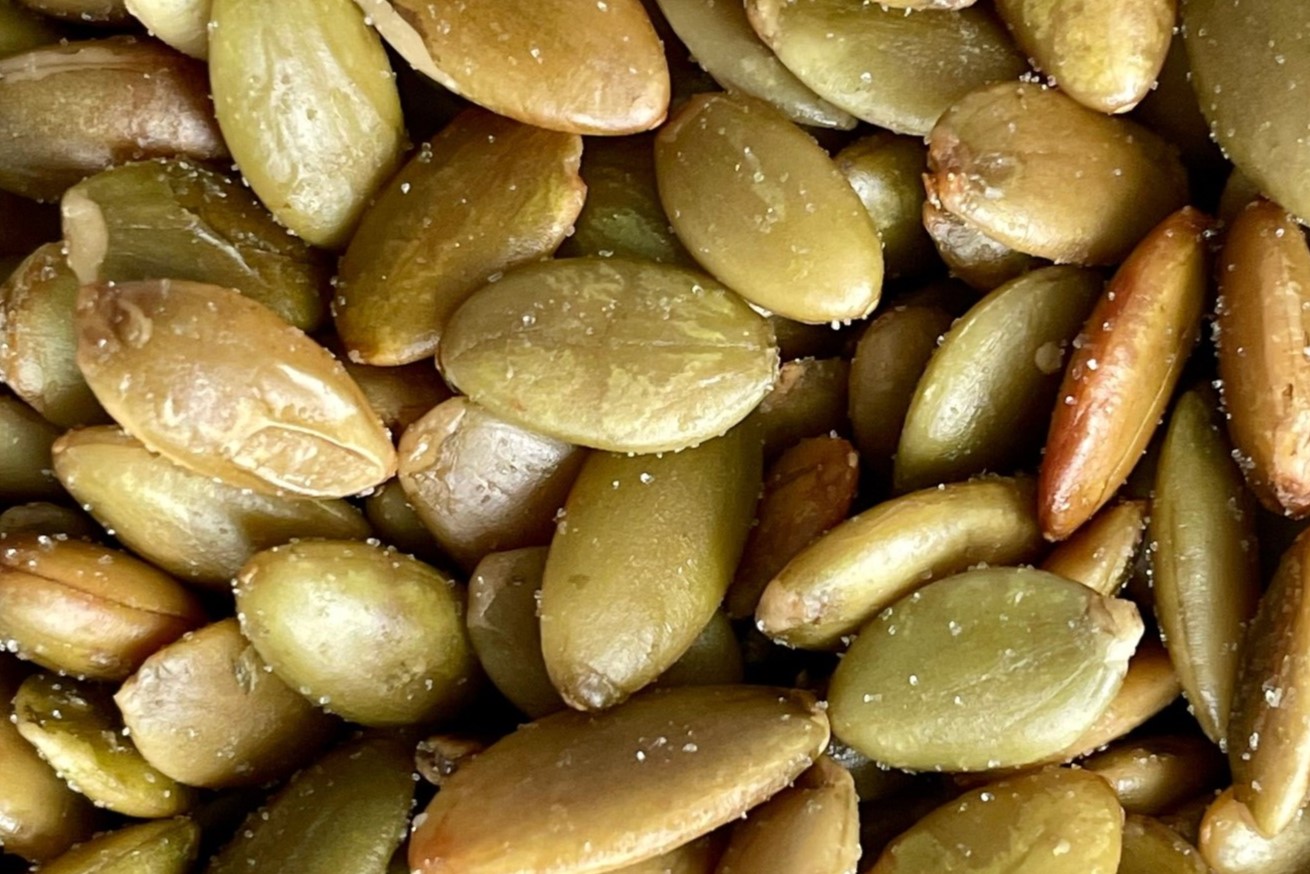
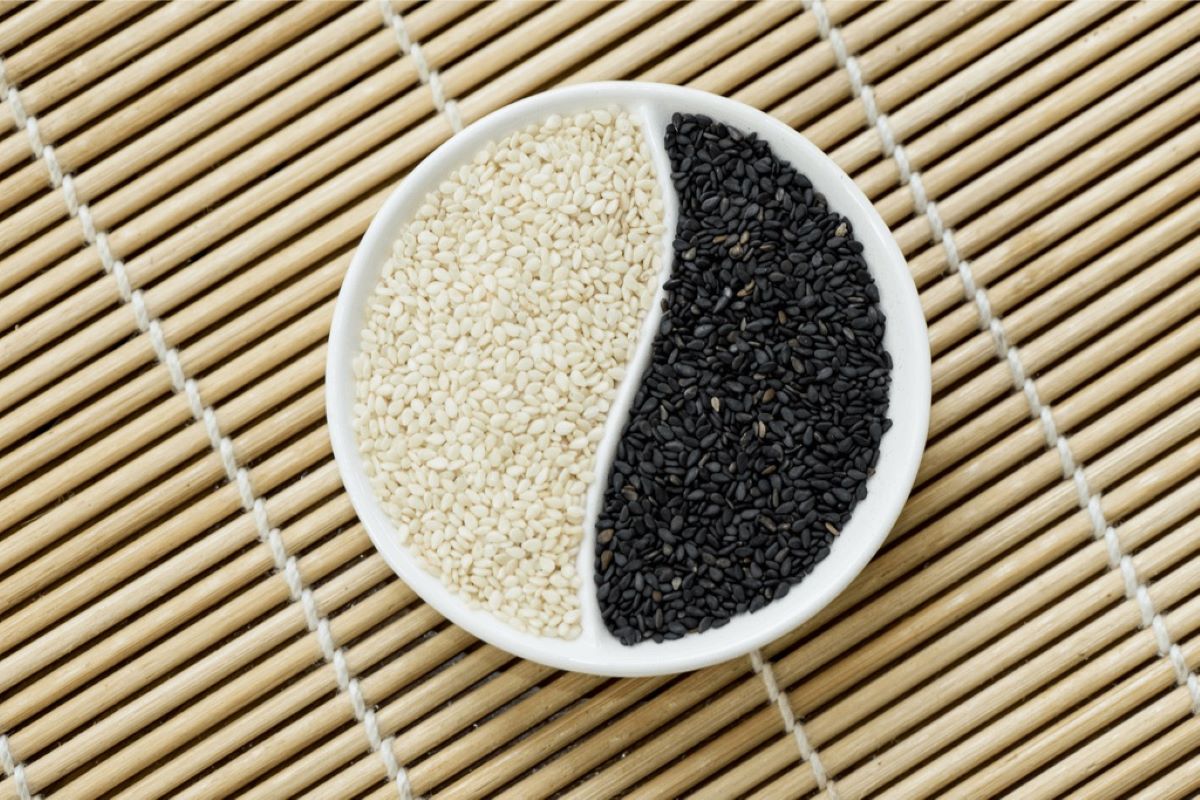
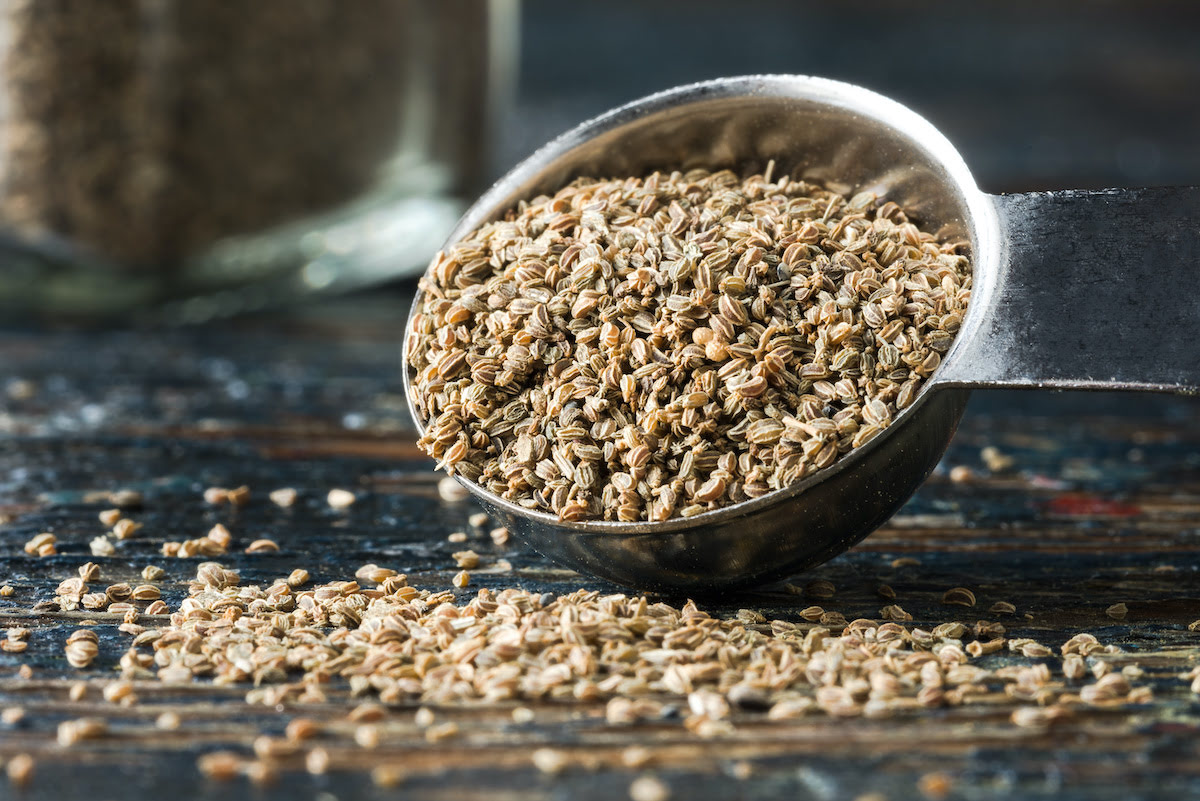
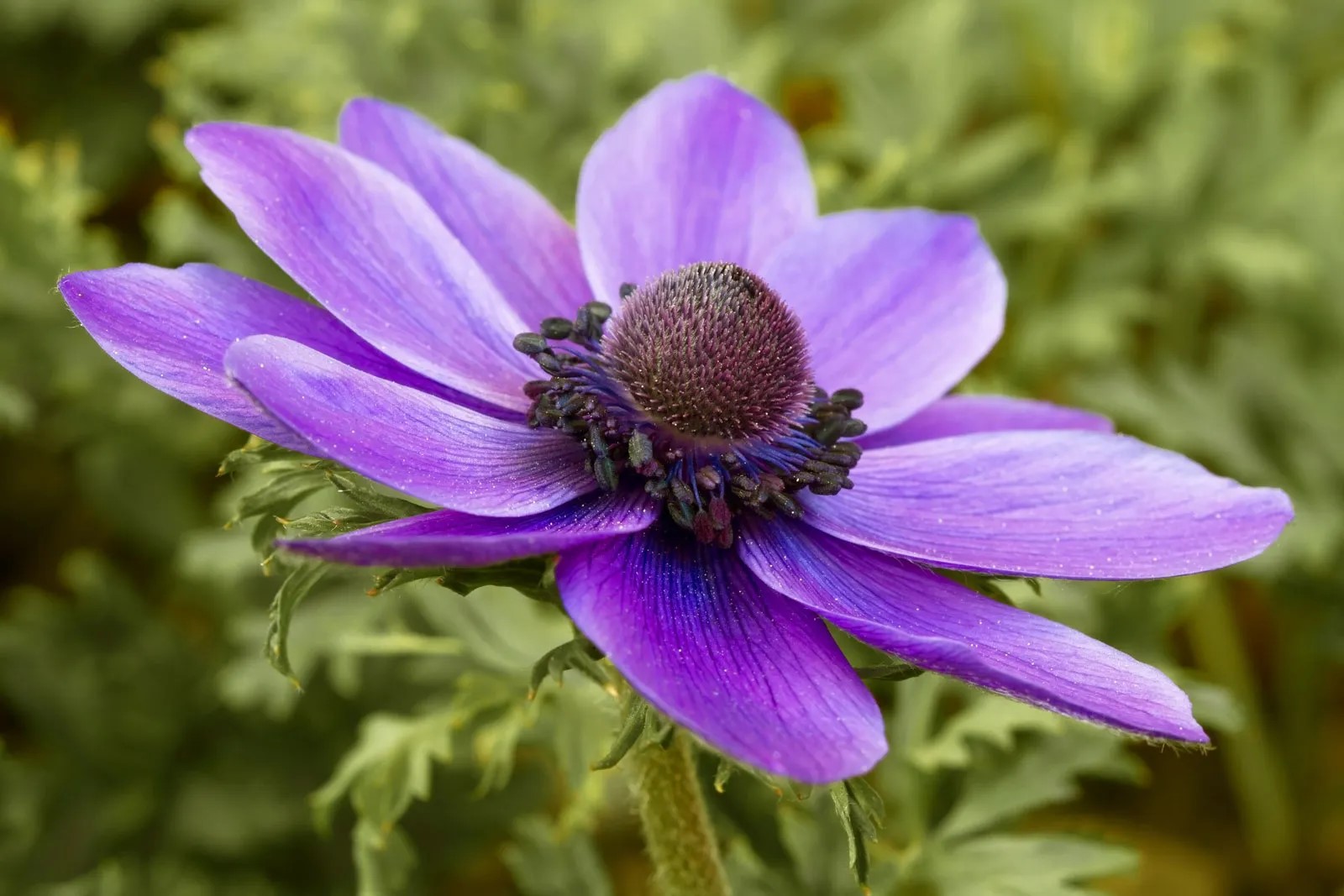








0 thoughts on “What Is The Difference Between A Nut And A Seed”